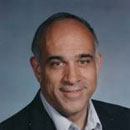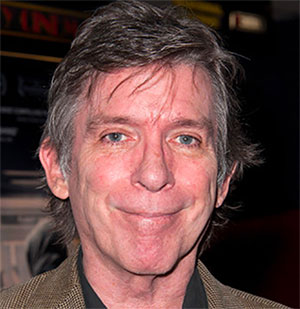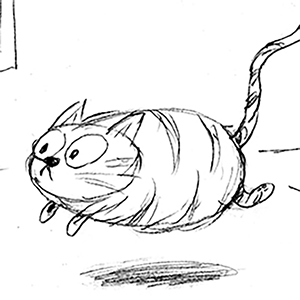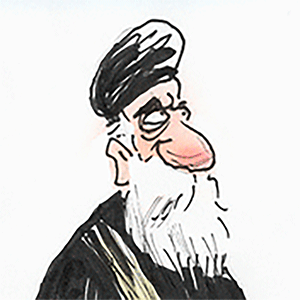10 best nonfiction books of the year
Published in Books News
Where Rivers Part
By Kao Kalia Yang
The St. Paul writer had an astonishingly productive year, publishing four books aimed at various age groups. My favorite was her memoir of her mother, a companion to “The Song Poet” (about her father) that goes back to her mother’s youth to trace her astonishing story of survival — through multiple miscarriages, life in a refugee camp, marital woes, unsafe living conditions and more. As we’ve come to expect from Yang, the writing is lyrical in this beautiful, courageous book. (And, by the way, the title refers both to the Laotian village where Tswb — prounounced “Chew” — grew up and their eventual home in St. Paul, between the Mississippi and Minnesota rivers.)
Dogland
By Tommy Tomlinson
Although it starts out as a behind-the-scenes peek into those dog shows where frumpily dressed owners trot around a ring behind their pampered pooches, “Dogland” ends up being much more. Tomlinson writes that he began wondering if “dogtestants” in pageants like the Westminster Kennel Club Dog Show were having a good time and, although he comes up with no definitive answers to that question, he reveals a lot about what dogs mean to us and what we may mean to them. In a balancing act worthy of one of those rare dog breeds that seem to have a Marie Antoinette-worthy pile of hairdo balanced atop their heads, Tomlinson’s book works both as a wry, zinger-filled look at a world that’s not so far from “Best in Show,” the movie that parodied it, and that makes you cry with his insights into what makes the dog/human bond so special.
The Siege
By Ben Macintyre
Astonishing from beginning to end, Macintyre’s book is an account of a hostage crisis at the Iranian embassy in London, during the same time period as the better-known Iran hostage crisis at the American embassy in Tehran. Macintyre, whose books usually focus on World War II spycraft, offers a minute-by-minute account of what was happening in the embassy, where inexperienced terrorists wavered on their demands, frightened hostages (many of whom just happened to have dropped in on the fateful day) feared for their lives and authorities worked to plant rescuers in neighboring buildings and on the floors above the embassy. Macintyre keeps the tension on high for the entirety of this gripping, real-life thriller.
Vanishing Treasures
By Katherine Rundell
The accent is on wonder in Rundell’s 23 delightful essays about creatures that may not be long for this world. Her book is packed with fun facts (polar bears can smell a meal 18 miles away, Atlanta residents are prohibited from chaining their pet giraffes to traffic lights) but her main theme is that the world is filled with incredible creatures that we should take better care of. Rundell is a witty, fluid writer and, although her book often looks to the past, her writing feels ideal for the present moment. Here, for instance, is Rundell on why she finds long-lived sharks so hopeful: “They will see us pass through whichever spinning chaos we may currently be living through, and the crash that will come after it, and they will live through the currently unimagined things that will come after that: the transformations, the revelations, the possible liberations.”
Hip-hop Is History
By: Questlove, with Ben Greenman
The Oscar and Grammy winner is a charming guide in this book, the title of which works two ways: He’s saying that much of what he has always loved about hip-hop is no longer true and that the deeply American art form is a great way to trace the history of the last half-century. “ History” is jam-packed with sweet anecdotes from Questlove’s childhood, when he first fell in love with the music (his parents were musicians) and began trading mixtapes with other Philadelphia kids, many of whom would also grow up to be giants of hip-hop. By the time hip-hop becomes the dominant musical genre in the ‘90s, Questlove knows the dirt on just about everyone (only some of which he is willing to dish) and he seems to have listened to everything ever recorded. The best evidence of this is the 16-page appendix, called “Hip-hop Songs I Actually Listen To,” which is like having a pal telling you what tracks you need to hear.
3 Shades of Blue
By James Kaplan
The title is slightly deceptive, or it was for me. I was expecting a history of the making of “Kind of Blue,” the bestselling (for good reason) jazz album of all time. That album was credited to trumpeter Miles Davis but its roster was packed with big names, including the two other legends that Kaplan focuses on: sax player John Coltrane and pianist Bill Evans. There’s a little behind-the-scene intel on “Kind of Blue” in “3 Shades” but it’s more interested in tracing what brought the men to the moment of inspiration and what they did to follow up that masterpiece. Kaplan’s a splendid writer — he notes that Billie Holliday was hospitalized because of heroin, “the drug that was both killing her and just barely keeping her alive” — and he has packed this book with stories of artistic triumphs and way too many personal tragedies.
Challenger
By Adam Higginbotham
The “Midnight in Chernobyl” writer is back with another detailed, humane account that rescues meaning from tragedy. Like “The Siege,” it’s a minute-by-minute page-turner that reads like a thriller. Higginbotham tells us the stories of all the people who died in the 1986 explosion of the space shuttle Challenger (not just teacher Christa McAuliffe, although Higginbotham has surprising insights about her, too). He also traces the decisions that led to the tragedy and steps back to see how the Challenger disaster continues to affect decisions currently being made about space exploration. Higginbotham concludes that, although the tragedy shocked the world, it was eminently preventable and it has changed the way Americans see themselves.
Feeding Ghosts
By Tessa Hulls
It can be a little intimidating diving into Hulls’ graphic memoir. Each page is densely packed with information, not just heavily cross-hatched images but also nervous-looking type that she ingeniously fits into the artwork. But a little patience is rewarded with a gorgeous and shocking tale of generational trauma. It begins with the author trying to figure out who she is and how she connects to the Chinese heritage both her mother and grandmother believe she disdains. But it becomes a moving story of multigenerational forgiveness as Hulls digs into her family’s secrets and discovers the reasons for the fear and anxiety that have always dogged her. No spoilers here, but all three women have more in common than they realize and it takes a triumphant work of art — specifically, the one we are reading — to help them understand that.
Circle of Hope
By Eliza Griswold
There are stunningly intimate details on just about every page of Griswold’s account of a Philadelphia church that is reckoning with injustice in the wake of the murders of George Floyd and other Black men at the hands of police. Griswold, who won a Pulitzer Prize for her fracking book “Amity and Prosperity,” practices immersive journalism, essentially embedding herself with a group of people for an extended period of time, and that’s probably the only way she could have obtained this story, which includes tons of stories the people involved shared with Griswold but not each other. Griswold shifts between the points of view of four pastors, who increasingly find themselves divided by the very things they’re trying to grapple with in their sermons: injustice, sexism, identity, racism. It’s a sad chronicle, not just because the Circle of Hope church eventually collapsed but also because Griswold shows us that the pastors were in agreement on most things but couldn’t effectively communicate that to each other.
Strong Passions
By Barbara Weisberg
Maybe the most incredible thing about Weisberg’s social history is that she was able to get to the bottom of this story at all. Unlike, say, World War II or the fall of apartheid, “Strong” focuses on a tiny, long-ago story that would not seem to have left much of an impact: the collapse of the marriage of Peter and Mary Strong, New Yorkers who stopped loving each other more than 160 years ago. Fortunately, they left behind lots of letters and said many foolish things in court — all of which Weisberg spins into gold in this gripping book, which is both a look at the things that can lead to a marriage’s failure (which were not so different in the 1860s) and the ways our society has become at least a little smarter about grappling with human foibles (in the Strongs’ day, decisions on whether a couple could divorce were not up to them but to a jury). Weisberg tells us a lot about love and law, with a bonus appearance by Edith Wharton, a relative of the couple who eventually wrote about them.
©2024 The Minnesota Star Tribune. Visit at startribune.com. Distributed by Tribune Content Agency, LLC.






















Comments